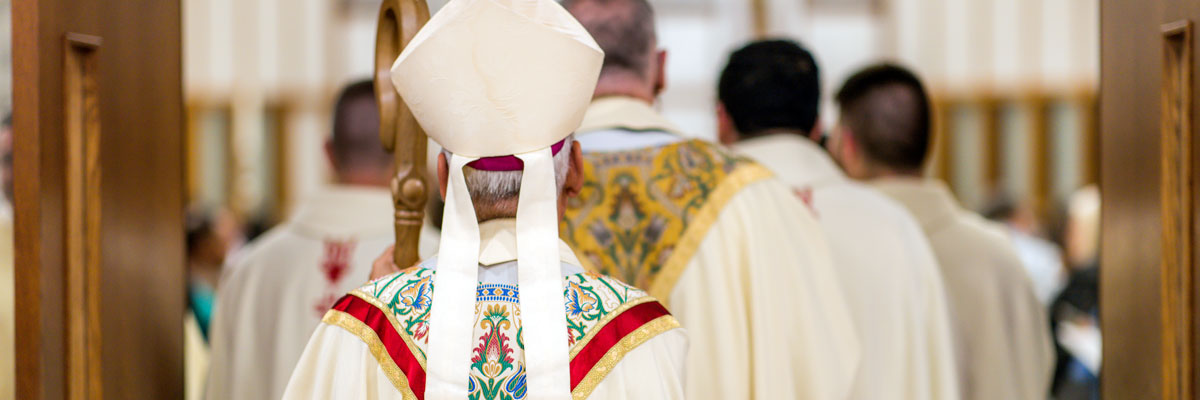Official Website of the
Catholic Diocese of Little Rock
Gospels call each of us to meet Jesus
Published: April 23, 2011
This is the 13th column in a 13-part series
By Clifford M. Yeary
Associate Director, Little Rock Scripture Study
I remember as a child reading a futuristic description of a telephone. It would be half television set (black and white, of
course) and half phone. I was amazed at the possibility. My mother said she would never be able to make a phone call without visiting the beauty parlor. Just since last Christmas, my extended family has discovered Skype. Skype is a way of making live video phone calls with a computer over the Internet. With an attached camera, you can chat face-to-face in living color with anyone else anywhere in the world with similar equipment. What was science fiction in my youth is now a reality.
 I want to make two points here, both related to our reading of the Gospels. First, means of communication have vastly changed in 2,000 years. Second, the more things change, the more they stay the same.
I want to make two points here, both related to our reading of the Gospels. First, means of communication have vastly changed in 2,000 years. Second, the more things change, the more they stay the same.
Whether we are prayerfully reading one of the Gospels on our own, or attentively listening to a liturgical proclamation of the Gospel, a well-informed, faithful reception of the Good News depends in part on our capacity to negotiate the vast difference in time and culture between ourselves and the human authors of the sacred text.
The Gospels, however, are timeless, and each one communicates the Good News of Christ in its own way to every generation. What many modern readers of the New Testament Gospels sometimes miss by being modern readers is that the Gospels are a unique form of literature. To be read as they were intended, we have to shed ourselves of some assumptions we usually make when we pick up a modern text and begin reading.
Today, when a modern reader takes up one of the Gospels, he or she could easily make the assumption that it is simply a biography of Jesus Christ. A common feature of many biographies is that they tell the story of a person’s life, usually in a sequential manner and hopefully with studious care for historical accuracy. For sure, the Gospels tell us much about Jesus’ life, but a careful examination also tells us they leave a great deal out.
If we only had Mark and John, we would know nothing about Jesus' birth. If we only had Matthew, Mark and Luke, we might think Jesus had an active ministry that only lasted a year. If the Gospels were biographies in the modern sense we might wonder about the amazing differences between John and the other Gospels. But each of the Gospels has a special purpose that we don’t encounter in modern writings.
This brings us to one very important way the Gospels are more like a video phone call than they are like reading a contemporary biography from a library shelf. When we get to see a loved one’s face and have a conversation together, a primary objective is to be with that person. We get to bask, as nearly as possible in this digital age, in the presence of the person we love.
Important information gets shared, for sure; otherwise, why not silence the speaker and microphone? With the Gospels, the information we are given is absolutely vital to our life as Christians, but it is not given to us for the simple sake of having information about a historical person of great religious consequence. The information is vital because, when we respond in faith, we are brought into the personal presence of Christ.
As John says, “Now Jesus did many other signs in the presence of (his) disciples that are not written in this book. But these are written that you may (come to) believe that Jesus is the Messiah, the Son of God, and that through this belief you may have life in his name”(20:30-31).
John’s Gospel is an invitation to share in the same life with Jesus that he revealed to his disciples. John’s invitation to life in Christ is not unique. We find it in all the Gospels. Each offers the invitation in its own, special way, but for all their differences, their invitations are to the same Jesus who calls to all: “Come, follow me” (Matthew 19:21; Mark 10:21; Luke 18:22).
Study Questions
- In what ways have you experienced the personal presence of loved ones when you could not be physically present to each other? How have changes in means of communication in your lifetime affected the way you experience the personal presence of others?
- What are some challenges modern readers might face when reading the Gospels for the first time?
- What makes our canonical Gospels different from modern biographies? Why might what distinguishes our Gospels from biographies be important for Christian spirituality?
- Where is the challenge to follow Jesus taking you?
This article was originally published in Arkansas Catholic April 23, 2011. Copyright Diocese of Little Rock. All rights reserved. This article may be copied or redistributed with acknowledgement and permission of the publisher.









